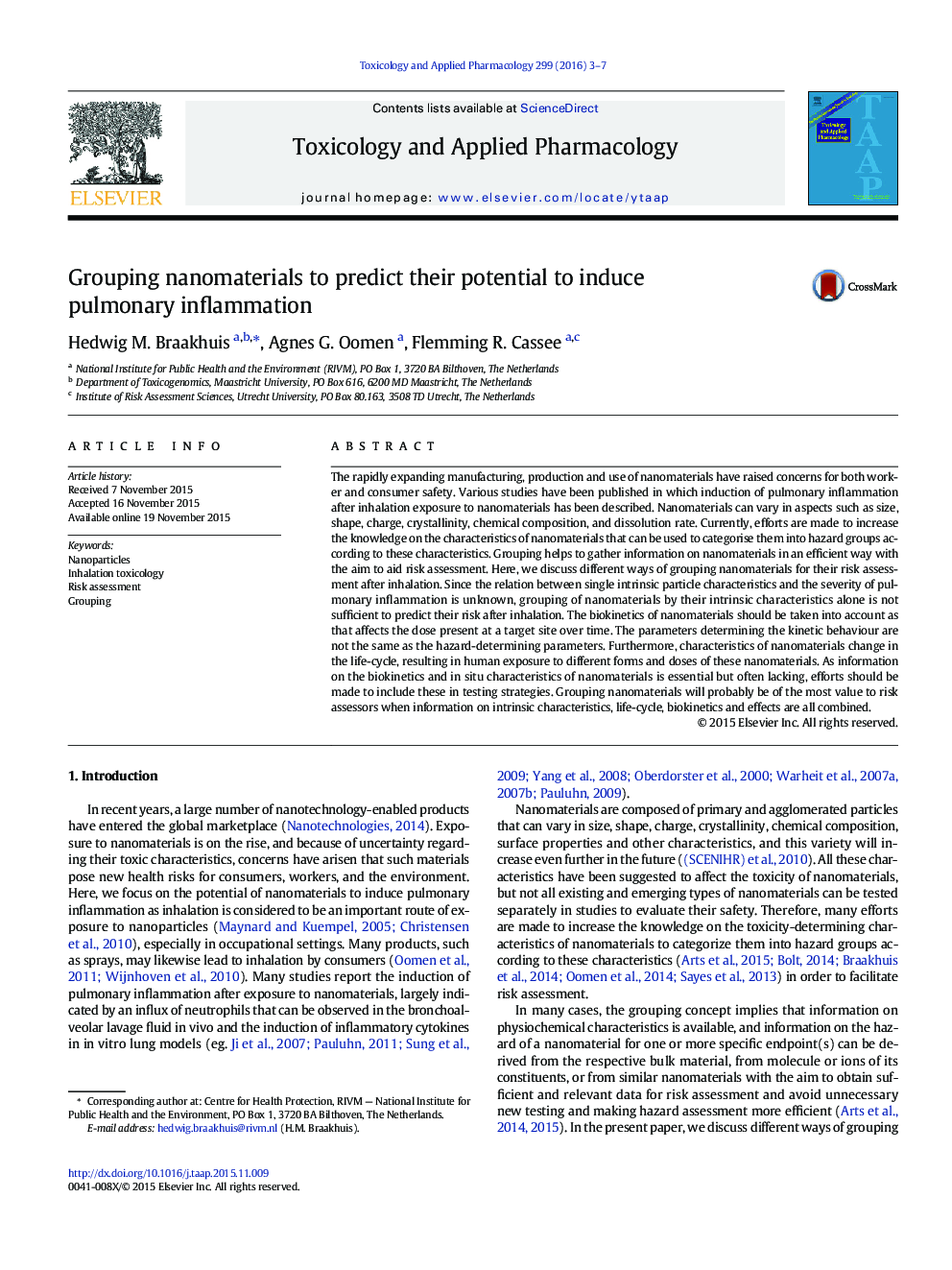| کد مقاله | کد نشریه | سال انتشار | مقاله انگلیسی | نسخه تمام متن |
|---|---|---|---|---|
| 2568112 | 1561163 | 2016 | 5 صفحه PDF | دانلود رایگان |
• Grouping of nanomaterials helps to gather information in an efficient way with the aim to aid risk assessment.
• Different ways of grouping nanomaterials for their risk assessment after inhalation are discussed.
• Grouping of nanomaterials by their intrinsic characteristics alone is not sufficient to predict their risk after inhalation.
• To link physicochemical characteristics of nanomaterials to an effect, information on their biokinetic behaviour is needed.
• To be of most value, grouping should combine information on intrinsic characteristics, life-cycle, biokinetics and effects.
The rapidly expanding manufacturing, production and use of nanomaterials have raised concerns for both worker and consumer safety. Various studies have been published in which induction of pulmonary inflammation after inhalation exposure to nanomaterials has been described. Nanomaterials can vary in aspects such as size, shape, charge, crystallinity, chemical composition, and dissolution rate. Currently, efforts are made to increase the knowledge on the characteristics of nanomaterials that can be used to categorise them into hazard groups according to these characteristics. Grouping helps to gather information on nanomaterials in an efficient way with the aim to aid risk assessment. Here, we discuss different ways of grouping nanomaterials for their risk assessment after inhalation. Since the relation between single intrinsic particle characteristics and the severity of pulmonary inflammation is unknown, grouping of nanomaterials by their intrinsic characteristics alone is not sufficient to predict their risk after inhalation. The biokinetics of nanomaterials should be taken into account as that affects the dose present at a target site over time. The parameters determining the kinetic behaviour are not the same as the hazard-determining parameters. Furthermore, characteristics of nanomaterials change in the life-cycle, resulting in human exposure to different forms and doses of these nanomaterials. As information on the biokinetics and in situ characteristics of nanomaterials is essential but often lacking, efforts should be made to include these in testing strategies. Grouping nanomaterials will probably be of the most value to risk assessors when information on intrinsic characteristics, life-cycle, biokinetics and effects are all combined.
Journal: Toxicology and Applied Pharmacology - Volume 299, 15 May 2016, Pages 3–7
